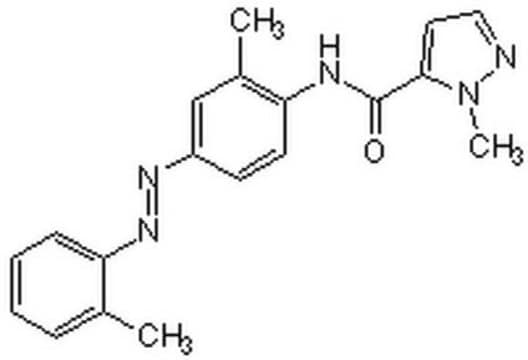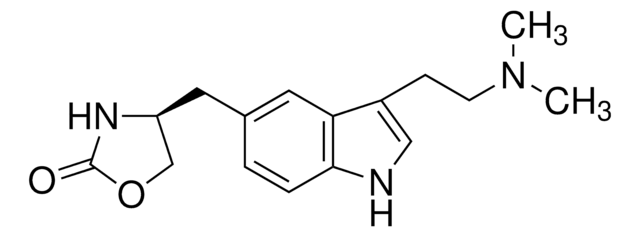G5918
GR 113808
≥98% (HPLC), solid
Sinónimos:
1-[2-[(Methylsulfonyl)-amino]ethyl]-4-piperidinyl]methyl 1-methyl-1H-indole-3-carboxylate
About This Item
Productos recomendados
Ensayo
≥98% (HPLC)
Formulario
solid
color
white to light pink
solubilidad
DMSO: >20 mg/mL
emisor
GlaxoSmithKline
temp. de almacenamiento
2-8°C
cadena SMILES
Cn1cc(C(=O)OCC2CCN(CCNS(C)(=O)=O)CC2)c3ccccc13
InChI
1S/C19H27N3O4S/c1-21-13-17(16-5-3-4-6-18(16)21)19(23)26-14-15-7-10-22(11-8-15)12-9-20-27(2,24)25/h3-6,13,15,20H,7-12,14H2,1-2H3
Clave InChI
MOZPSIXKYJUTKI-UHFFFAOYSA-N
Información sobre el gen
human ... HTR4(3360)
rat ... Htr3a(79246) , Htr4(25324)
Aplicación
Acciones bioquímicas o fisiológicas
Características y beneficios
Información legal
Código de clase de almacenamiento
11 - Combustible Solids
Clase de riesgo para el agua (WGK)
WGK 3
Punto de inflamabilidad (°F)
Not applicable
Punto de inflamabilidad (°C)
Not applicable
Equipo de protección personal
Eyeshields, Gloves, type N95 (US)
Elija entre una de las versiones más recientes:
¿Ya tiene este producto?
Encuentre la documentación para los productos que ha comprado recientemente en la Biblioteca de documentos.
Los clientes también vieron
Nuestro equipo de científicos tiene experiencia en todas las áreas de investigación: Ciencias de la vida, Ciencia de los materiales, Síntesis química, Cromatografía, Analítica y muchas otras.
Póngase en contacto con el Servicio técnico











